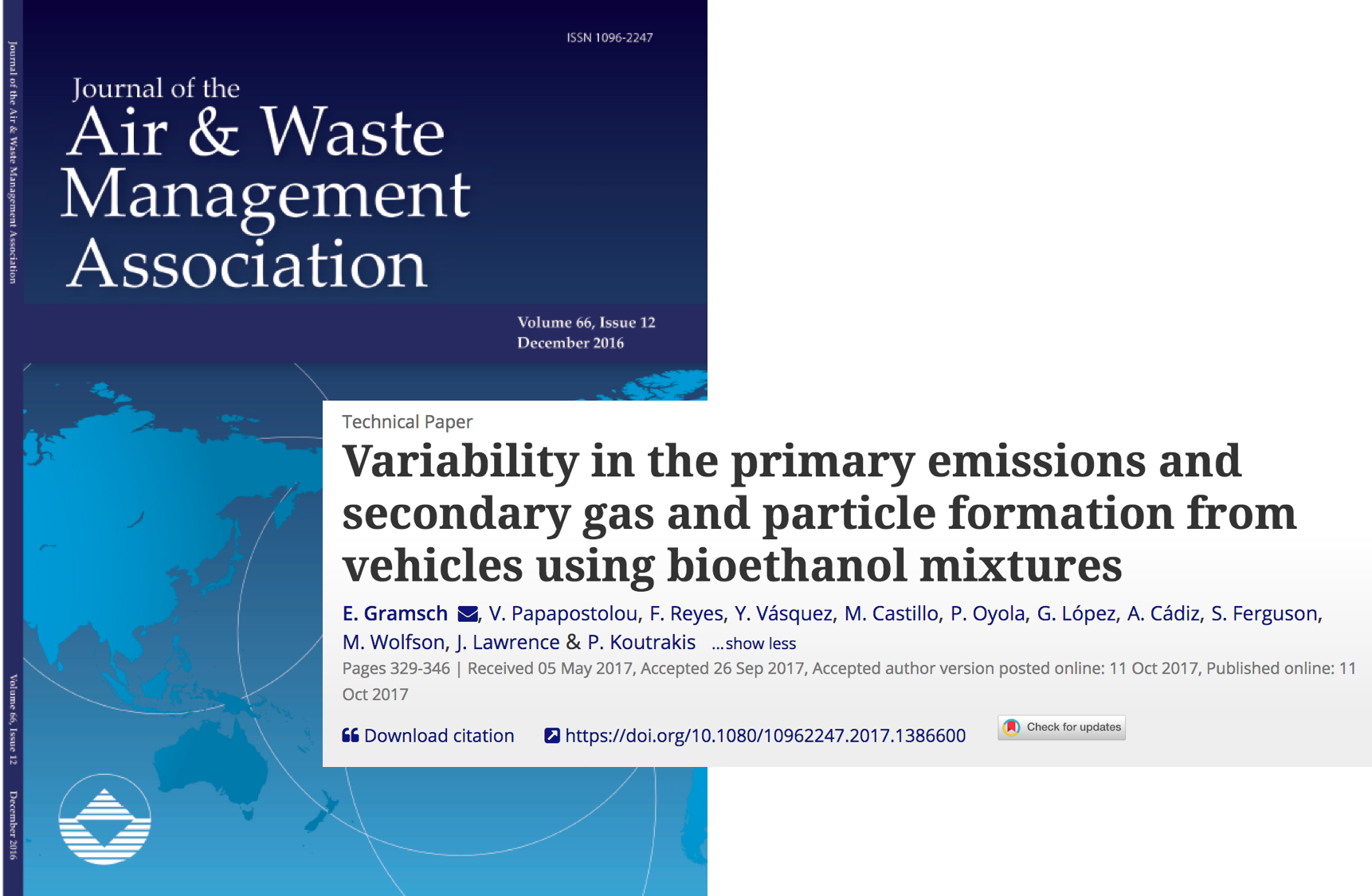Artículo

The CMM studied the variability in primary emissions in vehicles that use bioethanol mixtures
The team of the CMM in collaboration with the Harvard TH Chan School of Public Health, Harvard University of Boston, they made a study to identify the variability in the primary emission and secondary formation of gas and particles from the emission of vehicles with bioethanol mixture. This research was carried out within the framework of the project "Impacts on the health and environment of the exhaust gases of biofuels" Funded by the Inter-American Development Bank (IDB) and the National Fund for Scientific and Technological Development (Fondecyt ) project no. 1151117.
Abstract
Bioethanol for use in vehicles is becoming a substantial part of global energy infrastructure because it is renewable and some emissions are reduced. Carbon monoxide (CO) emissions and total hydrocarbons (THC) are reduced, but there is still controversy regarding emissions of nitrogen oxides (NOx), aldehydes, and ethanol; this may be a concern because all these compounds are precursors of ozone and secondary organic aerosol (SOA). The amount of emissions depends on the ethanol content, but it also may depend on the engine quality and ethanol origin. Thus, a photochemical chamber was used to study secondary gas and aerosol formation from two flex-fueled vehicles using different ethanol blends in gasoline. One vehicle and the fuel used were made in the United States, and the others were made in Brazil. Primary emissions of THC, CO, carbon dioxide (CO2), and nonmethane hydrocarbons (NMHC) from both vehicles decreased as the amount of ethanol in gasoline increased. NOxemissions in the U.S. and Brazilian cars decreased with ethanol content. However, emissions of THC, CO, and NOx from the Brazilian car were markedly higher than those from the U.S. car, showing high variability between vehicle technologies. In the Brazilian car, formation of secondary nitrogen dioxide (NO2) and ozone (O3) was lower for higher ethanol content in the fuel. In the U.S. car, NO2 and O3 had a small increase. Secondary particle (particulate matter [PM]) formation in the chamber decreased for both vehicles as the fraction of ethanol in fuel increased, consistent with previous studies. Secondary to primary PM ratios for pure gasoline is 11, also consistent with previous studies. In addition, the time required to form secondary PM is longer for higher ethanol blends. These results indicate that using higher ethanol blends may have a positive impact on air quality.
Implications: The use of bioethanol can significantly reduce petroleum use and greenhouse gas emissions worldwide. Given the extent of its use, it is important to understand its effect on urban pollution. There is a controversy on whether there is a reduction or increase in PM emission when using ethanol blends. Primary emissions of THC, CO, CO2, NOx, and NMHC for both cars decreased as the fraction of ethanol in gasoline increased. Using a photochemical chamber, the authors have found a decrease in the formation of secondary particles and the time required to form secondary PM is longer when using higher ethanol blends.






